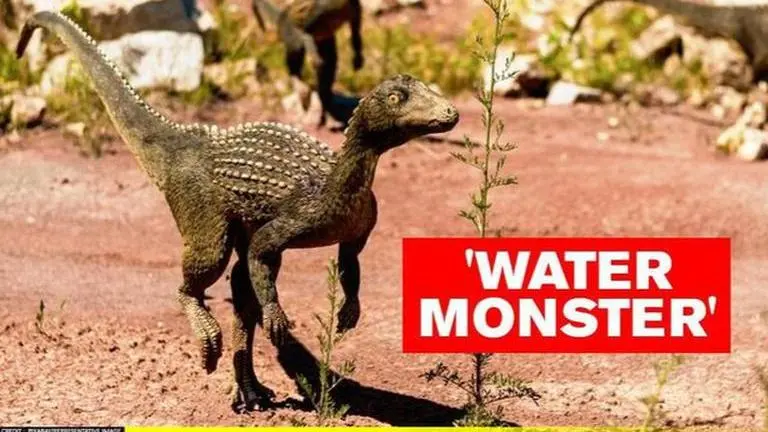Updated 26 September 2020 at 19:26 IST
Spinosaurus' fossilized teeth reveal 'Jurassic Park antagonist' was a 'river monster'
Scientists investigated 1,200 thousand fossilized teeth of Spinosaurus at the Kem Kem river system bed where the creature was largely found
- Science News
- 3 min read

A new study has found that the popular dinosaur species from the Jurassic Park movies known as the ‘Spinosaurus’ was an aquatic creature, contrary to the paleontologists’ theories that the extinct reptile were land dwellers. Scientists investigated 1,200 thousand fossilized teeth, excavated from the Kem Kem river system bed where the creature was largely found. The research led to the discovery that the gigantic dinosaur species was in fact a "river monster”. In a study published in the scientific journal Cretaceous Research, scientists say that the fossilized teeth of the species revealed that the creature, the giant antagonist predator, had a marine lifestyle.
[Spinosaurus, whose tail is shown here in an artist’s illustration, was well-adapted for aquatic life, a new study suggests. Along with its long, narrow jaws and conical teeth, the dinosaur had a unique, paddlelike tail. Credit: Davide Bonadonna/ Science Journal]
The species of the dinosaur Spinosaurus Aegyptiacus was made famous by the BBC documentary Planet Dinosaur and Jurassic Park III where the creature was portrayed surviving on land. However, a team of researchers from the University of Portsmouth stated that the 15 meters long, the six-tonne humongous creature was found in the river that flowed alongside the Sahara Desert 100 million years ago.
“From this research, we are able to confirm this location as the place where this gigantic dinosaur not only lived but also died. The results are fully consistent with the idea of a truly water-dwelling river monster,” professor of Palaeobiology at the University of Portsmouth, David Martill said in the research.
This comes, as earlier, scientists found that the sharp-toothed Spinosaurus were excellent swimmers and their fossils suggested that the carnivorous dinosaur actually had a tail and preyed on fish, other dinosaurs, and pterosaurs, as per the research published in the scientific journal Nature.
Advertisement
Advertisement
[An amateur fossil hunter first recovered pieces of Spinosaurus in 2008, in the Kem Kem region of southeastern Morocco in the Sahara. Credit: Diego Mattareilli/ Science Journal]
45 percent dental remains at water system
Mesozoic-Era creatures’ fossil remains accumulated from the site of an ancient river bed in Morocco earlier, also suggests that the species were water-dwelling reptiles. “The huge number of teeth we collected in the prehistoric river bed reveals that Spinosaurus was there in huge numbers, accounting for 45 percent of the total dental remains. We know of no other location where such a mass of dinosaur teeth have been found in bone-bearing rock,” Professor of Palaeobiology, Martill said in the research.
“Spinosaurus teeth, relative to other dinosaurs, is a reflection of their aquatic lifestyle. An animal living much of its life in water is much more likely to contribute teeth to the river deposit,” Professor Martill said in the research.
Earlier this year, the scientists uncovered a 95-million-year old Spinosaurus tail which was two-foot-long with an unusual paddle shape. Speculating, the species was likely propelled out of the water depths of the rivers, the researchers speculated that it was “aquatic”. The new study confirms that the non-avian dinosaur species was in fact aquatic.
[Paleontologist Diego Mattarelli (shown) sits in Morocco next to two unearthed fossils, pieces of a Spinosaurus tail. The two tail bones (the drumstick-like shapes at right) each show central, squarish vertebrae with a projecting neural spine. Credit: Gabriele Bindellini/Science Journal]
Published By : Zaini Majeed
Published On: 26 September 2020 at 19:26 IST




